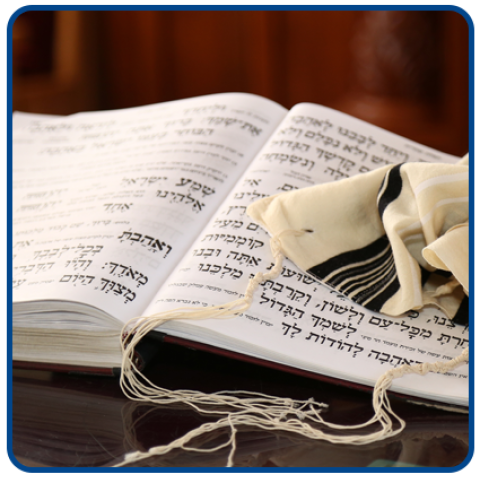By Jack KinsellaThe Shema is the central prayer in the Jewish prayer book. It is generally one of the first prayers a Jewish child learns. The Shema defines what it means to be Jewish as it has since the days of Moses: Shema Yisrael Adonai Eloheinu Adonai Echad—“Hear, O Israel: The LORD our God, the LORD is one” (Deuteronomy 6:4). It is upon this central truth that Judaism was founded as the world's first uniquely monotheistic faith, surrounded as it was by a world of polytheistic paganism. The Bible declares emphatically that “there is no God besides Me” (Deuteronomy 32:39), “I am the LORD and there is no other” (Isaiah 45:18), together with similarly strong declarations in Isaiah 43:10, Isaiah 46:10, Exodus 3:14, and elsewhere. So to someone born into a Jewish family and then raised in the Jewish faith, the Christian understanding of the Trinity is pagan polytheism, as is the Christian understanding of Yeshua as both Son of God and God the Son. To a Jew, this sounds like another god, a different god than the God of the Shema. So to him, a call to follow Yeshua is a call to be unfaithful to the God of Abraham, Isaac, and Jacob. And if God has a Son, why didn't He mention Him in the Old Testament?As a matter of fact, He did. Read Psalm 2:12: “Kiss his son, or he will be angry and your way will lead to your destruction, for his wrath can flare up in a moment. Blessed are all who take refuge in him.” Of Whom do you think the Psalmist is referring when he speaks of the “Son”? Among the Bible's unmistakeably monotheistic declarations are a number of perplexing assertions of plurality. It is perplexing because the Bible is most definite that there is only one God, but there is just as definitely a plurality about His Person.Of all the other names Moses might have made use of for God, he used Elohim, a plural invariably translated “us” as in Genesis 1:26—“Let us make mankind in our image, in our likeness . . .” or Genesis 11:7—“Let us go down and confuse their language . . .” Moses had other, singular Names he could have chosen for God besides Elohim, but Moses used the plural form because it was the one that God inspired him to use.Other plural terms used for God in the Old Testament include panim (equivalent to the Greek prosopa, for “faces,” “persons,” or “presence”), which is found in Exodus 33:14-15, Psalm 27:8-9, and Deuteronomy 4:37. The literal Hebrew for “Maker” in Job 35:10, Psalm 149:2, and Isaiah 54:5 is the plural, “Makers.” For “Creator” in Ecclesiastes 12:1, the literal Hebrew is “Creators.” The Bible teaches that no man has ever seen God or can ever see God, yet there are numerous references to visible appearances of God in the Old Testament. Some of these are clear references to the Son of God, as in Daniel 3:25. The King had ordered three men thrown into the furnace, but the captain of the guard reported there were four walking unhurt in the midst of the flames. “Look!” he answered, “I see four men loose, walking in the midst of the fire; and they are not hurt, and the form of the fourth is like the Son of God” (NKJV). That the Son is also the eternal God of Abraham, Isaac, and Jacob is demonstrated by the fact that He allows Himself to be worshipped—blasphemy for anyone else except God. There were also the three men that appeared to Abraham. Two were angels, but one the Bible refers to repeatedly as “the Lord.” Joshua 5:13-15 records a nearconfrontation between Joshua and a man that stood before him holding a drawn sword. Joshua went up to him and asked, “Are you for us or for our enemies?” “Neither,” he replied, “but as commander of the army of the LORD I have now come.” The Bible says that Joshua threw himself down before the man and worshipped and was instructed to take off his sandals, for the place where he now stood was holy ground. This cannot be just an angel. Angels cannot accept worship. The commander of the Lord's Army is, in fact, the Lord Himself, since only the Lord can accept worship. The “Angel of the Lord” in Genesis 16:7, 13, Genesis 22:11-12, and Exodus 3:2-6 are similar examples of the pre-incarnate Redeemer that later stepped out of space and time to be born, fully God and fully man, to a Jewish virgin in Bethlehem. According to John 1:1-3, He was Yeshua of Nazareth, and simultaneously, God the Son, present at Creation and without Whom “nothing was made that has been made.” The Father and the Son are one God, but at the same time, two distinct Persons. Colossians 1:15 explains it this way: “The Son is the image of the invisible God, the Firstborn over all Creation.” Just as the Shema is the bedrock doctrine of Judaism, this truth is the bedrock doctrine of Christianity; “You are the Messiah, the Son of the living God” (Matthew 16:16). Only as God the Son could He be our Redeemer—unless God Himself redeems us, we cannot be redeemed. The law of God demands perfect obedience to the Law—Yeshua is the only One who ever lived who fulfilled that demand. The law demands just punishment for those who sin—He fulfilled that demand as well. The law has been upheld. It is satisfied.To deny the Son is to deny the Father Who promised our redemption: “if you do not believe that I am he, you will indeed die in your sins” ( John 8:24).
Jack Kinsella is the founder and publisher of the Omega Letter (www.omegaletter.com). Jack is head writer of The Hal Lindsey Report television program and former head writer for This Week in Bible Prophecy. Jack is the author of more than two thousand columns on current events and Bible prophecy.










